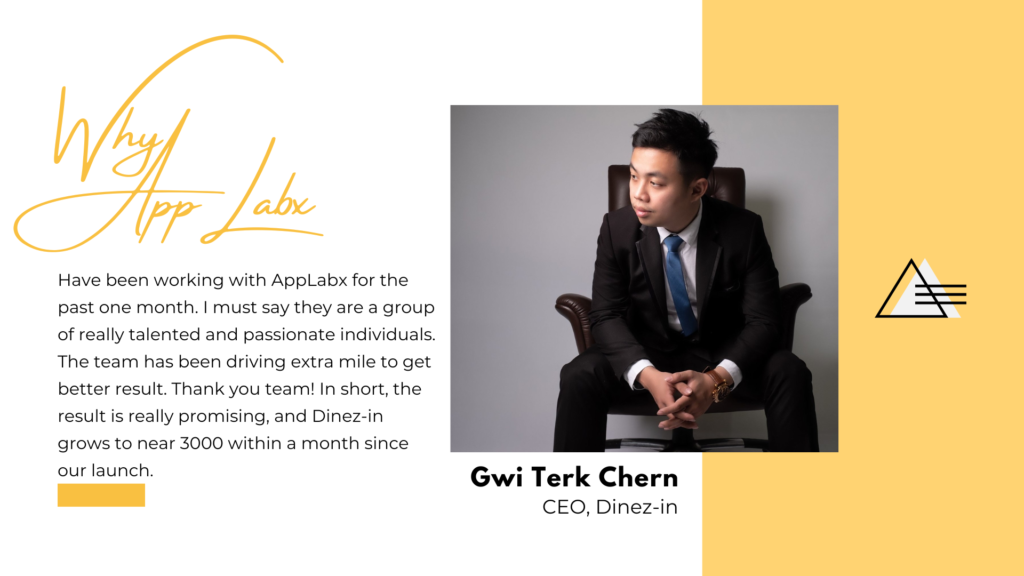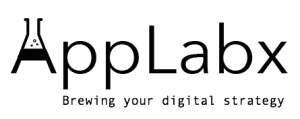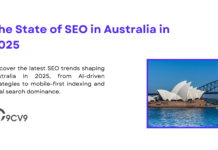Key Takeaways
- Adapt to Denmark’s SEO trends in 2025, including voice search, AI-driven content, and mobile-first indexing for better rankings.
- Leverage local SEO strategies like Google Business optimization and Danish directories to target regional audiences effectively.
- Measure success with data-driven metrics, focusing on organic traffic, keyword rankings, and Core Web Vitals compliance.
The digital landscape in Denmark is evolving at an unprecedented pace, and search engine optimization (SEO) has become a cornerstone for businesses striving to thrive in this dynamic environment.
As 2025 unfolds, the Danish online market presents a wealth of opportunities for brands willing to adapt to modern SEO strategies tailored to the unique needs of the region.
Whether you’re a small business owner, a marketing professional, or a global enterprise looking to expand into the Danish market, mastering SEO is no longer optional—it’s a necessity.

Denmark is one of the most digitally connected nations in the world, with over 97% of its population actively using the internet.
This high internet penetration, combined with a tech-savvy consumer base, has made the competition for online visibility fiercer than ever.
The question is: how do you ensure your business stands out in the crowded digital space? The answer lies in understanding and implementing effective SEO practices tailored to Denmark’s market dynamics, cultural nuances, and technological trends.
In 2025, SEO in Denmark is about much more than just ranking on Google.
While Google remains the dominant search engine, the rise of alternative platforms, growing adoption of voice and visual search, and an increasing emphasis on sustainability are reshaping the way people search for and consume information.
These shifts demand that businesses adopt a more holistic and strategic approach to SEO, ensuring their content is not only discoverable but also relevant, engaging, and culturally appropriate for Danish audiences.
Why Is SEO Crucial for Businesses in Denmark?
The importance of SEO in Denmark cannot be overstated. As the country continues to embrace digital transformation, Danish consumers are increasingly relying on online platforms to make purchasing decisions, research services, and explore new brands. From small local shops to multinational corporations, businesses across industries are leveraging SEO to reach their target audiences effectively.
Moreover, Denmark’s unique cultural and linguistic characteristics play a pivotal role in shaping its SEO landscape. For example, while English is widely understood, many consumers prefer content in Danish, especially when it comes to local products and services. This makes language optimization a critical component of any successful SEO strategy in Denmark. Additionally, Danish consumers value trust and transparency, which means businesses must focus on delivering authentic, high-quality content that resonates with their audience.
Key Trends Shaping SEO in Denmark in 2025
SEO in Denmark is being influenced by several key trends that businesses must keep in mind:
- Local SEO: With a growing focus on “near me” searches, local SEO has become vital for businesses aiming to attract nearby customers. Optimizing for Google Business Profiles and local directories is now essential.
- Sustainability in SEO: Denmark is a global leader in sustainability, and this ethos is reflected in its online search behavior. Consumers are actively seeking out eco-friendly products and companies with green business practices.
- AI and Automation: Artificial intelligence is playing a larger role in keyword research, content creation, and predictive analytics, enabling businesses to stay ahead of the competition.
- Voice and Visual Search: The increasing popularity of voice-activated devices and visual search tools is reshaping how Danish consumers interact with search engines, necessitating new optimization strategies.
What You’ll Learn in This Guide
In this comprehensive guide, we’ll walk you through everything you need to know about SEO in Denmark in 2025. From understanding the nuances of the Danish market to mastering the latest on-page, off-page, and technical SEO strategies, this guide is designed to equip you with actionable insights to enhance your online presence. You’ll discover the tools and techniques that successful Danish businesses are using, as well as case studies that highlight what works—and what doesn’t—in this competitive market.
Whether you’re new to SEO or looking to refine your existing strategies, this guide will provide you with the knowledge and tools to navigate the ever-changing digital landscape of Denmark. Let’s dive in and explore how you can leverage SEO to unlock new opportunities and achieve sustainable growth in 2025.
But, before we venture further, we like to share who we are and what we do.
About AppLabx
From developing a solid marketing plan to creating compelling content, optimizing for search engines, leveraging social media, and utilizing paid advertising, AppLabx offers a comprehensive suite of digital marketing services designed to drive growth and profitability for your business.
AppLabx is well known for helping companies and startups use SEO to drive web traffic to their websites and web apps.
At AppLabx, we understand that no two businesses are alike. That’s why we take a personalized approach to every project, working closely with our clients to understand their unique needs and goals, and developing customized strategies to help them achieve success.
If you need a digital consultation, then send in an inquiry here.
AppLabx SEO Agency: The Leading SEO Agency in Denmark for 2025
In today’s digital-first world, establishing a robust online presence is crucial for any business aiming to succeed in Denmark.
At AppLabx SEO Agency, we specialize in crafting tailored SEO strategies that drive results.
Our proven track record, local expertise, and forward-thinking approach make us the top choice for businesses in Denmark looking to dominate search engine rankings in 2025 and beyond.

Why AppLabx is the Best SEO Agency for Your Business in Denmark
- In-Depth Local Knowledge: As a team with a strong understanding of the Danish market, we’re able to craft SEO strategies that speak directly to local consumers. We know the nuances of Denmark’s search engine preferences, cultural trends, and consumer behavior.
- Cutting-Edge SEO Strategies: We stay ahead of the curve by continuously adapting to the latest SEO trends, from mobile-first indexing to AI-powered content optimization and voice search. Our expertise ensures that your website is optimized for future-proof success.
- Custom-Tailored Solutions: We understand that every business is unique, which is why we offer personalized SEO services that cater to your specific needs. Whether you’re a local startup or an established Danish brand, our solutions are designed to meet your business goals and exceed your expectations.
- Proven Results and ROI: At AppLabx, our focus is on delivering measurable results. From increased organic traffic to improved keyword rankings and higher conversion rates, our data-driven approach ensures that your investment in SEO provides real, tangible outcomes.
Our Comprehensive SEO Services
At AppLabx, we offer a full suite of SEO services designed to boost your online presence and drive growth in the Danish market:
- On-Page SEO Optimization: We enhance your website’s content, meta tags, and overall structure to align with Danish search queries and improve visibility.
- Local SEO Expertise: We optimize your Google Business Profile, build local backlinks, and target region-specific keywords to help you dominate local search results in Denmark.
- Technical SEO: Our technical SEO services ensure your website loads quickly, is mobile-friendly, and adheres to best practices, making it easier for search engines to crawl and rank your site.
- Content Creation & Optimization: From keyword research to AI-driven content strategies, we produce high-quality, relevant content that resonates with Danish users and boosts your rankings.
- Comprehensive Analytics & Reporting: We provide ongoing monitoring and transparent reporting to track the success of your SEO efforts. Our data-driven insights allow us to refine strategies and ensure maximum return on investment.
Why Choose AppLabx SEO Agency in Denmark?
- Experienced Professionals: Our team consists of SEO experts with years of experience working in the Danish market. We understand the unique challenges and opportunities your business faces.
- Proven Success: We have a strong portfolio of clients in various industries who have seen substantial improvements in their search engine rankings and online visibility.
- Future-Proof Strategies: With the fast-evolving landscape of SEO, we ensure that your website remains adaptable and ready for the SEO trends of tomorrow.
- Customer-Centric Approach: Your success is our success. We work closely with you to understand your goals, and we’re always available to discuss your SEO strategy.
Ready to Take Your Business to the Next Level?
Partner with AppLabx SEO Agency, Denmark’s top choice for SEO services in 2025, and unlock the full potential of your online presence. Whether you’re looking to increase local traffic, rank higher in search engines, or drive more conversions, we have the expertise to make it happen.
Contact us today to start your journey towards SEO success and see why we’re the trusted SEO partner for businesses across Denmark.
A Complete Guide to SEO in Denmark in 2025
- Understanding the Danish Market
- Key SEO Trends in Denmark for 2025
- On-Page SEO Techniques for Danish Websites
- Off-Page SEO Strategies in Denmark
- Technical SEO Considerations
- Local SEO: Targeting Danish Audiences
- Measuring SEO Success in Denmark
1. Understanding the Danish Market
Successfully implementing SEO strategies in Denmark begins with a deep understanding of the local market. In 2025, the Danish digital ecosystem reflects a combination of high internet penetration, cultural preferences, and emerging trends that shape how people search for and consume content. By tailoring your SEO efforts to align with these dynamics, you can effectively connect with Danish audiences and stand out in a competitive environment.
Cultural Nuances and Consumer Behavior
Danish consumers are highly discerning, with preferences influenced by culture, language, and values. Understanding their behavior is essential for crafting effective SEO strategies.
- Language Preferences:
- While English proficiency is high in Denmark, many consumers prefer Danish for local products and services.
- Example: A restaurant targeting local audiences in Copenhagen should optimize its website with Danish keywords like “bedste restaurant i København” (best restaurant in Copenhagen) rather than relying solely on English keywords.
- Multilingual websites that support Danish and English can appeal to both local and international customers.
- Focus on Trust and Transparency:
- Danish consumers value transparency in business practices, especially regarding sustainability and ethical sourcing.
- Example: Businesses with eco-friendly certifications should highlight these credentials using keywords like “bæredygtig virksomhed” (sustainable company).
- Simplicity in Design and Navigation:
- Websites should be user-friendly, visually clean, and functional, reflecting the Scandinavian preference for simplicity.
- Example: E-commerce platforms like Zalando offer a seamless user experience with clear product categories, Danish language support, and easy navigation.
Popular Search Engines in Denmark
While Google remains the dominant search engine in Denmark, other platforms are also gaining traction, influencing how businesses approach SEO.
- Google:
- Accounts for over 90% of searches in Denmark, making it the primary focus for most SEO strategies.
- Features like Google Business Profiles and Google Maps are crucial for local SEO.
- Bing and Ecosia:
- Bing holds a small but steady share, appealing to users integrated into Microsoft’s ecosystem.
- Ecosia, a search engine that plants trees for every search, is gaining popularity due to Denmark’s focus on sustainability.
- Local Search Directories:
- Platforms like Krak and De Gule Sider remain relevant for local businesses.
- Example: A local plumber in Aarhus can enhance visibility by optimizing listings on these directories with keywords like “vvs-installatør Aarhus” (plumber Aarhus).
Digital Trends Shaping the Market
Emerging trends in technology and consumer preferences are redefining how businesses connect with Danish audiences.
- Mobile-First Behavior:
- Over 75% of Danish internet users access content via mobile devices.
- Example: Businesses must ensure their websites are optimized for mobile with fast loading times and responsive designs to avoid losing customers.
- Voice Search Adoption:
- The growing use of voice assistants like Google Assistant and Amazon Alexa means businesses must optimize for conversational keywords.
- Example: Instead of “cheap hotels Copenhagen,” optimize for phrases like “where can I find affordable hotels in Copenhagen?”
- Eco-Conscious Consumers:
- Sustainability heavily influences Danish purchasing decisions, impacting SEO strategies.
- Example: An online store selling organic products can target keywords like “økologisk mad online” (organic food online) to attract eco-conscious shoppers.
Key Industries in Denmark’s Digital Economy
Certain sectors dominate Denmark’s economy, offering opportunities for niche-specific SEO.
- E-commerce:
- Online shopping continues to grow, with a focus on sustainability and convenience.
- Example: A Danish clothing brand can target keywords like “bæredygtigt tøj online” (sustainable clothing online) to attract local buyers.
- Tourism:
- Denmark’s appeal as a travel destination creates opportunities for hospitality and tourism-related businesses.
- Example: A tour operator in Copenhagen can rank for “de bedste ture i København” (the best tours in Copenhagen).
- Technology and Innovation:
- Denmark’s leadership in renewable energy and tech innovation drives demand for industry-specific content.
- Example: A company specializing in wind turbines can target keywords like “vindmølle løsninger Danmark” (wind turbine solutions Denmark).
Consumer Trust and GDPR Compliance
Data privacy remains a significant concern for Danish users, making GDPR compliance crucial for online success.
- Importance of HTTPS:
- Secure websites are prioritized by search engines and trusted by Danish consumers.
- Example: E-commerce platforms must ensure that their payment pages are encrypted with HTTPS.
- Transparent Data Practices:
- Clear cookie policies and data consent banners are mandatory under GDPR.
- Example: Implementing a compliant cookie banner stating how user data is stored and used builds trust and aligns with Danish legal expectations.
Examples of Businesses Succeeding in the Danish Market
- Nemlig.com:
- A leading online grocery store that dominates local search with keywords like “dagligvarer online” (groceries online).
- Its user-friendly design, localized content, and efficient delivery system cater perfectly to Danish preferences.
- LEGO:
- A global brand with Danish roots that excels in multilingual SEO, targeting both local and international audiences.
- Too Good To Go:
- A food waste reduction app popular in Denmark that optimizes for sustainability-focused keywords and local SEO.
By understanding and adapting to these aspects of the Danish market, businesses can develop highly effective SEO strategies that resonate with local consumers, meet their expectations, and drive sustainable growth in 2025.
2. Key SEO Trends in Denmark for 2025
The SEO landscape in Denmark is continually evolving, influenced by technological advancements, consumer behavior shifts, and cultural priorities. In 2025, businesses must stay ahead of the curve by embracing trends that redefine how they optimize their online presence. Here’s a detailed look at the most significant SEO trends shaping Denmark this year.
1. AI and Machine Learning in SEO
Artificial intelligence (AI) and machine learning are transforming how businesses approach SEO by automating processes, improving accuracy, and delivering actionable insights.
- AI-Driven Keyword Research:
- Tools like Semrush and Ahrefs leverage AI to identify high-performing keywords faster and with greater precision.
- Example: A Danish bakery targeting keywords like “bageri København” (bakery Copenhagen) can use AI to discover long-tail variations such as “økologisk bageri på Vesterbro” (organic bakery in Vesterbro).
- Content Personalization:
- AI helps create personalized content based on user behavior and preferences, increasing engagement.
- Example: An e-commerce site can use AI to recommend products based on a customer’s search history, improving the chances of conversion.
- Predictive Analytics for SEO:
- Businesses can predict search trends and adapt strategies proactively.
- Example: A travel agency can forecast rising interest in “sommerferie i Danmark 2025” (summer vacation in Denmark 2025) and prepare content ahead of competitors.
2. The Growing Importance of Local SEO
Local SEO continues to be a critical factor for businesses in Denmark, especially for small and medium enterprises targeting local audiences.
- Google Business Profiles:
- Optimizing Google Business Profiles ensures better visibility in local searches.
- Example: A restaurant in Aarhus should update its profile with keywords like “bedste brunch i Aarhus” (best brunch in Aarhus) to rank higher in local searches.
- Localized Content:
- Creating region-specific content helps businesses connect with local audiences.
- Example: A gym in Odense could create blog posts like “Top træningstips til Odense-borgere” (Top fitness tips for Odense residents).
- Hyperlocal Marketing:
- Optimizing for “near me” searches remains crucial as Danish users frequently look for nearby businesses.
- Example: Keywords like “blomsterbutik nær mig” (flower shop near me) can drive traffic to local florists.
3. Sustainability and Green SEO Practices
Denmark is a global leader in sustainability, and this ethos extends to online search behavior. Businesses with eco-friendly practices are gaining visibility by aligning with this trend.
- Eco-Conscious Keywords:
- Incorporating keywords that highlight sustainability can improve rankings.
- Example: An online clothing store can target “bæredygtigt tøj” (sustainable clothing) to attract eco-conscious shoppers.
- Green Web Hosting:
- Using green hosting services improves brand perception among environmentally aware users.
- Example: Companies can highlight their use of sustainable hosting providers in their content marketing strategies.
- Showcasing CSR Initiatives:
- Highlighting corporate social responsibility (CSR) efforts boosts credibility and engagement.
- Example: A company planting trees for every purchase can include this in its meta descriptions and content.
4. The Rise of Voice and Visual Search
The adoption of smart devices and visual search tools is changing how Danish users find information online.
- Voice Search Optimization:
- Optimizing for conversational keywords is crucial as voice searches become more popular.
- Example: Instead of targeting “hotels Copenhagen,” businesses should optimize for questions like “hvor er de bedste hoteller i København?” (where are the best hotels in Copenhagen?).
- Visual Search Tools:
- Platforms like Pinterest and Google Lens are becoming popular for shopping and research.
- Example: A furniture store can optimize images with keywords like “moderne sofaer i Danmark” (modern sofas in Denmark) to rank for visual searches.
5. Mobile-First SEO
With over 75% of Danish users accessing the internet on mobile devices, mobile-first indexing is more critical than ever.
- Responsive Design:
- Websites must adapt seamlessly to different screen sizes to improve user experience.
- Example: E-commerce sites like Boozt.com excel by offering a mobile-friendly shopping experience.
- Page Speed Optimization:
- Fast-loading pages reduce bounce rates and improve rankings.
- Example: Danish news sites like DR.dk prioritize page speed to retain mobile readers.
- AMP (Accelerated Mobile Pages):
- Implementing AMP for blogs and articles can boost rankings in mobile search results.
- Example: A travel blog about “ferie i Danmark” (vacation in Denmark) can use AMP to attract more readers.
6. Enhanced User Experience (UX)
Search engines like Google are prioritizing user experience (UX) as a key ranking factor.
- Core Web Vitals:
- Metrics like loading speed, interactivity, and visual stability affect rankings.
- Example: An online bookstore can improve Core Web Vitals by optimizing images and minimizing JavaScript.
- Interactive Content:
- Features like quizzes, calculators, and interactive maps increase engagement.
- Example: A real estate website could include a “calculate your mortgage” tool optimized for Danish users.
- Clear Navigation:
- Easy-to-navigate websites improve dwell time and reduce bounce rates.
- Example: Websites like VisitDenmark.com use clear menus and categories to keep users engaged.
7. Emphasis on Data Privacy and GDPR Compliance
Denmark places a high value on data privacy, making compliance with GDPR a top priority.
- Transparent Cookie Policies:
- Clearly communicate how user data is collected and used.
- Example: Include pop-ups that explain cookie usage and offer opt-in options.
- Secure Websites (HTTPS):
- HTTPS is mandatory for building trust and improving rankings.
- Example: All e-commerce sites should ensure secure checkout pages to meet user expectations.
8. Content E-A-T (Expertise, Authority, Trustworthiness)
Google’s E-A-T guidelines continue to shape content strategies for SEO success in Denmark.
- Expert-Led Content:
- Content written by experts improves credibility and rankings.
- Example: A health website targeting “kosttilskud i Danmark” (dietary supplements in Denmark) can feature articles by certified nutritionists.
- Building Authority:
- Earning backlinks from reputable Danish websites boosts domain authority.
- Example: Collaborating with Danish universities for research-based content can secure high-authority backlinks.
- Trust Signals:
- Reviews, testimonials, and certifications build trust with users and search engines.
- Example: Highlighting awards or ISO certifications on your website boosts credibility.
By leveraging these key SEO trends in 2025, businesses in Denmark can adapt to evolving user behaviors, harness new technologies, and establish a stronger online presence. Incorporating these strategies ensures long-term growth in an increasingly competitive digital market.
3. On-Page SEO Techniques for Danish Websites
On-page SEO is the foundation of any successful digital strategy, especially in a market as unique as Denmark. To optimize your website for Danish users in 2025, you must align your content, structure, and technical elements with local search trends and consumer preferences. Below is a detailed guide on the essential on-page SEO techniques you should prioritize to achieve higher rankings and better engagement.
1. Keyword Research and Optimization
Effective on-page SEO begins with comprehensive keyword research tailored to the Danish market.
- Focus on Localized Keywords:
- Use Danish-language keywords to target local audiences effectively.
- Example: Instead of generic terms like “buy shoes,” use “køb sko online” (buy shoes online).
- Leverage Long-Tail Keywords:
- Targeting longer, more specific phrases helps capture niche audiences.
- Example: A travel website can optimize for “budget venlige hoteller i København” (budget-friendly hotels in Copenhagen).
- Incorporate Synonyms and Variations:
- Include related keywords and Danish slang to account for diverse search queries.
- Example: For a coffee shop, optimize for “kaffebar,” “café,” and “kaffe nær mig” (coffee near me).
2. High-Quality Content Creation
Content is king, and for Danish websites, creating localized, relevant, and engaging content is paramount.
- Write for Danish Audiences:
- Craft content in Danish to resonate with local users.
- Example: A Danish recipe blog should focus on local dishes like “smørrebrød opskrifter” (open-faced sandwich recipes).
- Include Data and Examples Relevant to Denmark:
- Use local statistics, case studies, or examples to enhance credibility.
- Example: An article about electric vehicles can reference Denmark’s goal of phasing out fossil fuel cars by 2030.
- Optimize for E-A-T (Expertise, Authority, Trustworthiness):
- Publish well-researched, authoritative content.
- Example: A health and wellness site should feature articles by certified Danish nutritionists.
3. Meta Tags and Descriptions
Meta tags remain a critical on-page SEO element to boost click-through rates (CTR) and rankings.
- Craft Compelling Title Tags:
- Include primary keywords and keep the length under 60 characters.
- Example: “Bæredygtige Tøjbutikker i Danmark | Shop Grøn i 2025” (Sustainable Clothing Stores in Denmark | Shop Green in 2025).
- Write Optimized Meta Descriptions:
- Use persuasive language and incorporate target keywords.
- Example: “Opdag de bedste bæredygtige modebutikker i Danmark. Køb økologisk tøj online og støt en grønnere fremtid.” (Discover the best sustainable fashion stores in Denmark. Buy organic clothing online and support a greener future.)
- Utilize Structured Data Markup:
- Implement schema.org to help search engines understand your content better.
- Example: Use LocalBusiness schema for a restaurant in Aarhus to enhance visibility in local search results.
4. Image and Multimedia Optimization
Images and videos significantly impact engagement and on-page SEO, but they must be optimized effectively.
- Use Alt Text:
- Add descriptive alt text for all images, including relevant keywords.
- Example: “Billede af smørrebrød med sild og karrysalat” (Image of smørrebrød with herring and curry salad).
- Compress Images for Faster Load Times:
- Use tools like TinyPNG to reduce image sizes without compromising quality.
- Optimize Video Content:
- Include Danish subtitles and optimize video descriptions with relevant keywords.
- Example: A fitness studio could upload a workout video titled “Hjemmetræning for begyndere i Danmark” (Home workouts for beginners in Denmark).
5. Mobile-First Optimization
Given Denmark’s high mobile internet usage, mobile-first optimization is non-negotiable.
- Responsive Design:
- Ensure your website adapts seamlessly to all devices.
- Example: Use tools like Google’s Mobile-Friendly Test to check your website’s responsiveness.
- Fast Loading Speeds:
- Compress files, use a content delivery network (CDN), and enable browser caching.
- Example: Optimize loading times for pages like “hurtig levering af blomster i København” (fast flower delivery in Copenhagen).
6. Internal Linking Strategy
Internal links improve website navigation and distribute link equity across pages.
- Use Descriptive Anchor Text:
- Anchor text should include relevant keywords for better SEO.
- Example: A blog about Danish tourism can link to a page titled “Planlæg din rejse til Skagen” (Plan your trip to Skagen).
- Create Topic Clusters:
- Group related content to establish authority in specific niches.
- Example: A site about Danish cuisine could have clusters like “traditionelle retter” (traditional dishes) and “moderne dansk mad” (modern Danish food).
7. URL Structure
A clear and concise URL structure enhances both user experience and SEO.
- Keep URLs Short and Descriptive:
- Include primary keywords in the URL.
- Example: www.dansk-mode.dk/baeredygtigt-toj (www.danish-fashion.dk/sustainable-clothing).
- Avoid Special Characters:
- Use hyphens instead of underscores to separate words.
8. Optimize for Voice Search
Voice search is gaining popularity in Denmark, driven by smart devices like Google Home and Alexa.
- Target Conversational Keywords:
- Optimize for questions and natural language phrases.
- Example: Include phrases like “hvordan finder jeg bæredygtige butikker i København?” (how do I find sustainable shops in Copenhagen?).
- Focus on Localized Voice Queries:
- Add content tailored to “near me” searches.
- Example: A bakery could optimize for “bageri nær mig” (bakery near me).
9. Improve Readability and User Engagement
Content that is easy to read and engage with performs better on search engines.
- Use Short Paragraphs and Subheadings:
- Break content into digestible sections for better readability.
- Include Bullet Points and Lists:
- Lists make content easier to scan.
- Incorporate Danish Cultural References:
- Example: Mention events like “Roskilde Festival” or traditions like “hygge” in relevant contexts.
10. Regular Content Updates
Search engines favor websites with fresh, updated content.
- Refresh Outdated Information:
- Update statistics, add new insights, and optimize for emerging keywords.
- Example: Update a blog titled “SEO Tips for 2023” to “SEO Tips for 2025 in Denmark.”
- Repurpose Old Content:
- Convert blog posts into videos, infographics, or podcasts to reach a broader audience.
By implementing these on-page SEO techniques, Danish websites can enhance their search visibility, deliver better user experiences, and achieve sustained growth in 2025. The key is to stay consistent, adapt to new trends, and continuously optimize for the needs of the local audience.
4. Off-Page SEO Strategies in Denmark
Off-page SEO plays a crucial role in boosting a website’s authority, driving organic traffic, and improving search engine rankings. In Denmark, leveraging local insights and aligning with cultural nuances can amplify the effectiveness of these strategies. Here is a detailed and SEO-optimized guide to implementing off-page SEO techniques tailored to the Danish market in 2025.
1. Local Link-Building Strategies
Securing backlinks from high-authority and local Danish sources is essential for improving search visibility in Denmark.
- Collaborate with Danish Domains:
- Focus on acquiring backlinks from .dk websites as they carry more weight for local SEO.
- Example: A Copenhagen-based fashion brand could collaborate with Danish fashion blogs like “Mode i København” (Fashion in Copenhagen).
- Partner with Local Business Directories:
- List your business in reputable Danish directories like:
- Krak.dk
- DeGulesider.dk
- ByensBedste.dk
- Example: A hotel in Odense can optimize its listing with keywords like “bedste hotel i Odense” (best hotel in Odense).
- List your business in reputable Danish directories like:
- Sponsor Local Events and Organizations:
- Supporting events like the “Roskilde Festival” or sponsoring community initiatives can earn backlinks from event websites.
- Example: An eco-friendly product company could sponsor a local sustainability conference to gain links and visibility.
- Guest Posting on Danish Websites:
- Contribute articles to niche blogs and news platforms.
- Example: A health and wellness business could write for “Sundhedsmagasinet” (Health Magazine) on topics like “sund livsstil i Danmark” (healthy lifestyle in Denmark).
2. Leveraging Social Media Platforms
Social media engagement significantly influences brand authority and indirectly boosts SEO performance in Denmark.
- Focus on Popular Platforms in Denmark:
- Platforms like Facebook, Instagram, LinkedIn, and TikTok are widely used in Denmark.
- Example: A startup offering sustainable packaging could share behind-the-scenes videos on Instagram using hashtags like #BæredygtigDanmark (Sustainable Denmark).
- Participate in Local Communities:
- Join Danish Facebook groups or LinkedIn communities relevant to your niche.
- Example: A home renovation company could join a group like “Boligindretning i Danmark” (Home Design in Denmark) to share tips and engage with potential clients.
- Utilize Influencer Marketing:
- Partner with Danish influencers to expand reach and generate backlinks through blog posts or social media mentions.
- Example: A skincare brand could collaborate with Danish beauty influencers to promote products and secure mentions on their blogs.
3. Building a Strong Online Reputation
A positive online reputation fosters trust and improves organic rankings.
- Encourage Reviews on Danish Platforms:
- Actively request customer reviews on platforms like Trustpilot.dk and Google Reviews.
- Example: A restaurant could prompt diners to leave reviews with incentives like a free dessert on their next visit.
- Engage with User-Generated Content (UGC):
- Share content created by your customers, such as photos or testimonials.
- Example: A travel agency could feature customer-submitted travel photos on their social media or website.
- Monitor and Address Negative Feedback:
- Use tools like Mention or Google Alerts to track your brand mentions and respond promptly to concerns.
4. Content Marketing Beyond Your Website
Distributing high-quality content across external platforms enhances visibility and builds authority.
- Publish Content on Danish Platforms:
- Contribute to industry-specific publications or general platforms like Medium in Danish.
- Example: An IT company could write about “Digital transformation i Danmark” (Digital Transformation in Denmark).
- Create Shareable Infographics and Resources:
- Design infographics tailored to Danish audiences and share them on platforms like Pinterest.
- Example: A real estate agency could create an infographic titled “De bedste områder at bo i Danmark” (The Best Areas to Live in Denmark).
- Host Webinars or Online Events:
- Offer free webinars on topics relevant to your industry.
- Example: A marketing agency could host a webinar on “SEO Tendenser i Danmark 2025” (SEO Trends in Denmark 2025).
5. Community Engagement and Networking
Building meaningful relationships within the Danish community can enhance your online presence.
- Collaborate with Local Influencers:
- Partner with thought leaders in your niche to co-create content.
- Example: A fitness center could collaborate with a Danish fitness influencer for a blog series on “Træning i 2025” (Training in 2025).
- Engage in Forums and Q&A Platforms:
- Actively participate in discussions on platforms like Reddit (Danish subreddits) or Quora.
- Example: A tax consultant could answer questions in threads about “Skat i Danmark” (Taxes in Denmark).
- Support Local Charities or Causes:
- Partner with Danish charities to gain visibility and backlinks.
- Example: An organic food store could support food drives organized by Danish NGOs.
6. Video Marketing for Off-Page SEO
Video content is increasingly popular and can drive significant traffic when optimized for SEO.
- Create YouTube Content with Danish Keywords:
- Optimize titles, descriptions, and tags in Danish.
- Example: A cooking channel could produce a video titled “Sådan laver du traditionelle danske frikadeller” (How to Make Traditional Danish Meatballs).
- Leverage TikTok Trends:
- Participate in trending challenges relevant to your industry.
- Example: A travel company could showcase Danish destinations in short, engaging TikTok videos.
- Collaborate on Video Campaigns:
- Partner with other businesses to co-produce content.
- Example: A gym and a nutritionist could team up for a video series on “Sundhedsrejse i Danmark” (Health Journey in Denmark).
7. Utilize PR Campaigns and Media Outreach
Public relations efforts can secure high-quality backlinks and establish brand credibility.
- Pitch Stories to Danish Media:
- Share newsworthy content or insights with Danish journalists.
- Example: A startup unveiling a groundbreaking product could feature in outlets like Børsen or Politiken.
- Collaborate with Industry Influencers:
- Partner with Danish experts to amplify your message.
- Example: A fintech company could work with an economist to publish a whitepaper on “Den digitale økonomi i Danmark” (The Digital Economy in Denmark).
- Organize Press Events:
- Host product launches or press briefings to gain media attention.
- Example: An eco-friendly furniture brand could showcase its latest line at a sustainable living expo.
8. Focus on Brand Mentions and Unlinked Citations
Brand mentions without links can still contribute to off-page SEO by building recognition and trust.
- Track and Convert Mentions into Backlinks:
- Use tools like Google Alerts or Ahrefs to identify unlinked mentions of your brand and request links.
- Example: A tech company could turn mentions on Danish tech blogs into backlinks.
- Collaborate with Danish Influencers:
- Secure mentions in their social posts or blogs to increase visibility.
By implementing these tailored off-page SEO strategies, businesses in Denmark can effectively build authority, attract local audiences, and stay competitive in the digital landscape of 2025.
5. Technical SEO Considerations
Technical SEO is a critical component for ensuring that search engines can crawl, index, and rank your website efficiently. In Denmark, the nuances of user behavior, local search preferences, and government regulations make it essential to adapt your technical SEO practices accordingly. Here’s a detailed guide to the key technical SEO considerations Danish websites should prioritize in 2025.
1. Website Performance Optimization
A fast and responsive website is essential to meet user expectations and improve search rankings in Denmark.
- Improve Page Load Speeds:
- Compress images and use next-gen formats like WebP.
- Enable browser caching and minimize CSS, JavaScript, and HTML.
- Example: A Danish e-commerce site can use tools like Google PageSpeed Insights to optimize loading times for high-traffic pages like “billige elektroniktilbud” (cheap electronics deals).
- Leverage a Content Delivery Network (CDN):
- Use CDNs to distribute content across servers closer to Danish users.
- Example: A streaming service targeting Danish audiences could use a Nordic-based CDN for faster access.
- Prioritize Core Web Vitals:
- Optimize Largest Contentful Paint (LCP), First Input Delay (FID), and Cumulative Layout Shift (CLS).
- Example: Ensure product images on an online store load without delay or unexpected shifts in layout.
2. Mobile-First Indexing
With a high mobile usage rate in Denmark, optimizing for mobile-first indexing is non-negotiable.
- Responsive Design:
- Ensure your site works seamlessly across all screen sizes.
- Example: A Danish travel website should ensure its booking forms and navigation menus are fully functional on mobile devices.
- Eliminate Mobile Pop-Up Intrusions:
- Avoid intrusive pop-ups that disrupt user experience.
- Example: Replace large promotional pop-ups with smaller, user-friendly banners.
- Test Mobile Compatibility:
- Use Google’s Mobile-Friendly Test to identify and resolve issues.
3. Localized Structured Data Markup
Structured data helps search engines understand your content and display rich results tailored to Danish users.
- Implement Local Business Schema:
- Add structured data to highlight your business name, address, and contact details.
- Example: A bakery in Aarhus can use structured data to appear in local “near me” searches like “bageri nær mig” (bakery near me).
- Use Product Markup for E-Commerce:
- Showcase product details, prices (in DKK), and availability in search results.
- Example: An electronics retailer could use markup for listings like “Samsung Galaxy S22 tilbud” (Samsung Galaxy S22 deals).
- Incorporate Event Schema:
- Highlight upcoming events to attract local audiences.
- Example: A museum in Copenhagen could use schema for exhibits like “Vikingeudstilling 2025” (Viking Exhibition 2025).
4. URL Structure and Canonicalization
A clear and optimized URL structure improves user experience and search engine indexing.
- Use Clean and Descriptive URLs:
- Keep URLs short and include target keywords.
- Example: Use www.website.dk/sommerferie-tilbud for a page about summer vacation deals in Denmark.
- Set Up Canonical Tags:
- Prevent duplicate content issues by specifying the preferred version of a page.
- Example: If your site has multiple URLs for the same product, set a canonical tag to consolidate SEO value.
- Optimize Multilingual URLs:
- For websites targeting multiple countries, use hreflang tags for Danish audiences.
- Example: For a global site, set Danish-specific pages like /dk/ and indicate the language as “da-DK.”
5. Crawlability and Indexability
Ensure that search engines can effectively crawl and index your site.
- Optimize Robots.txt:
- Clearly define which pages should or shouldn’t be crawled.
- Example: Block search engine bots from accessing staging environments or admin pages.
- Submit XML Sitemaps:
- Regularly update and submit sitemaps to Google Search Console.
- Example: Include new blog posts like “SEO strategier for Danmark 2025” (SEO strategies for Denmark 2025) in your sitemap.
- Resolve Broken Links:
- Identify and fix 404 errors to maintain a smooth user experience.
- Example: Use tools like Screaming Frog to locate and update broken links on Danish product pages.
6. Security and HTTPS
Website security is a trust factor for both users and search engines, particularly in Denmark’s privacy-conscious environment.
- Use HTTPS Across Your Site:
- Secure your website with SSL/TLS certificates.
- Example: A Danish online banking service must ensure that all transactions occur on HTTPS to build user trust.
- Enable Two-Factor Authentication (2FA):
- Protect sensitive areas of your website with 2FA.
- Example: For sites with user accounts, like e-commerce platforms, implement 2FA to secure customer data.
- Prevent Content Scraping:
- Use tools like Cloudflare to prevent unauthorized bots from stealing content.
7. Optimize for Voice Search
Voice search adoption is growing in Denmark, driven by smart devices.
- Target Conversational Keywords:
- Focus on natural language queries in Danish.
- Example: Optimize for “Hvor kan jeg finde økologisk mad i København?” (Where can I find organic food in Copenhagen?).
- Create FAQ Pages:
- Develop FAQ pages addressing common voice search queries.
- Example: A car dealership could include questions like “Hvilke elbiler er bedst i 2025?” (Which electric cars are the best in 2025?).
8. Image and Video Optimization
Multimedia content can boost engagement but requires technical optimization.
- Compress Images Without Losing Quality:
- Use tools like TinyPNG for faster load times.
- Example: Optimize images for a Danish furniture store’s gallery showcasing “moderne dansk design” (modern Danish design).
- Add Descriptive Alt Text:
- Use Danish keywords in alt tags for better image SEO.
- Example: “Alt text: Spisebord i træ med minimalistisk design” (Wooden dining table with minimalist design).
- Host Videos on Optimized Platforms:
- Use platforms like YouTube or embed videos with lightweight players.
- Example: A Danish fitness studio could upload workout tutorials titled “Hjemmetræning for begyndere” (Home workouts for beginners).
9. Regular Technical Audits
Performing periodic technical audits ensures your website stays optimized.
- Use SEO Tools:
- Tools like SEMrush, Ahrefs, and Google Search Console are invaluable for identifying technical issues.
- Monitor Core Web Vitals Metrics:
- Regularly check and improve performance metrics.
- Update Plugins and Software:
- Keep CMS platforms like WordPress and associated plugins up-to-date.
By addressing these technical SEO considerations, Danish websites can ensure their online presence is optimized for search engines while providing a seamless user experience. This approach will help businesses thrive in Denmark’s digital ecosystem in 2025.
6. Local SEO: Targeting Danish Audiences
Local SEO is vital for businesses aiming to connect with Danish audiences effectively. With Denmark’s high internet penetration and increasing use of localized searches, optimizing for local visibility can drive traffic, leads, and conversions. This guide provides comprehensive strategies to dominate local SEO in Denmark in 2025.
1. Optimizing Google Business Profile (GBP)
A well-optimized Google Business Profile ensures that your business appears prominently in local search results and Google Maps.
- Claim and Verify Your Profile:
- Register your business on Google Business Profile (GBP) and verify ownership.
- Example: A bakery in Aarhus can claim its profile to appear in searches like “bageri nær mig” (bakery near me).
- Provide Accurate Business Information:
- Include:
- Business name, address, and phone number (NAP).
- Business hours, website URL, and email address.
- Example: A Copenhagen-based law firm should list specialized services like “juridisk rådgivning for virksomheder” (legal advice for businesses).
- Include:
- Add High-Quality Photos:
- Upload images of your premises, products, or services.
- Example: A Danish café can share pictures of popular dishes like smørrebrød or the café interior.
- Encourage Reviews:
- Ask satisfied customers to leave positive reviews and respond to them.
- Example: An auto repair shop in Odense could request reviews for searches like “bedste automekaniker i Odense” (best auto mechanic in Odense).
2. Local Keyword Research
Understanding the search intent of Danish users is essential for effective local SEO.
- Use Geo-Specific Keywords:
- Combine services or products with local terms.
- Example: Instead of “plumber,” target “blikkenslager i København” (plumber in Copenhagen).
- Incorporate Regional Variants:
- Use Danish language nuances and regional terms.
- Example: Use “frokostrestauranter i Jylland” (lunch restaurants in Jutland) for region-specific searches.
- Leverage Tools for Keyword Research:
- Use Google Keyword Planner, Ahrefs, or SEMrush to find popular local queries.
3. Localized Content Marketing
Creating location-specific content helps attract Danish audiences and improves local rankings.
- Write Blog Posts with Local Focus:
- Target local events, culture, and news.
- Example: A travel agency could write about “De bedste steder at besøge i Danmark om sommeren” (The best places to visit in Denmark during summer).
- Create City-Specific Landing Pages:
- Develop pages for each city or region you serve.
- Example: A cleaning service could have pages like “rengøringstjenester i Aalborg” (cleaning services in Aalborg).
- Showcase Customer Stories:
- Share testimonials or case studies from local clients.
- Example: A web design company could feature success stories from Danish small businesses.
4. Building Local Citations
Consistent business information across directories improves local SEO and builds trust.
- List on Danish Directories:
- Include your business on trusted directories such as:
- Krak.dk
- DeGuleSider.dk
- Trustpilot.dk
- Include your business on trusted directories such as:
- Ensure NAP Consistency:
- Keep your name, address, and phone number consistent across all listings.
- Target Niche-Specific Platforms:
- Example: A hotel in Aarhus could list on tourism platforms like “VisitDenmark.”
5. Geo-Targeted Link Building
High-quality backlinks from local sources can boost domain authority and search rankings.
- Partner with Local Bloggers and Influencers:
- Collaborate on content or sponsored posts.
- Example: A fitness center could work with a Danish fitness blogger to create workout tips.
- Support Local Events and Organizations:
- Sponsor community events or partner with local charities for backlinks.
- Example: A restaurant could sponsor a food festival in Copenhagen.
- Leverage Local Press:
- Share newsworthy updates with Danish media outlets for mentions.
- Example: A tech company launching a product could pitch a story to “Børsen” or “Politiken.”
6. Voice Search Optimization for Local Audiences
Voice search is becoming popular in Denmark, with users seeking quick, conversational answers.
- Target Conversational Queries:
- Optimize for long-tail keywords in Danish.
- Example: Use phrases like “Hvor er nærmeste cykelværksted?” (Where is the nearest bike repair shop?).
- Optimize FAQ Sections:
- Add local-specific questions to your FAQ.
- Example: A healthcare clinic could include “Tilbyder I gratis konsultationer i København?” (Do you offer free consultations in Copenhagen?).
7. Mobile Optimization for Local Search
With Denmark’s high mobile internet usage, optimizing for mobile devices is critical.
- Ensure Responsive Design:
- Make your website user-friendly on all screen sizes.
- Enable Click-to-Call Features:
- Allow users to call your business directly from search results.
- Example: A Danish florist can benefit from click-to-call for quick orders.
- Use Mobile-Optimized Maps:
- Embed Google Maps with directions to your business.
8. Leveraging Reviews for Local SEO
Customer reviews influence rankings and user trust.
- Prioritize Trustpilot Reviews:
- Encourage reviews on this popular Danish platform.
- Respond to Reviews Promptly:
- Address both positive and negative feedback to show customer engagement.
- Showcase Reviews on Your Website:
- Example: Add a review carousel highlighting testimonials from Danish clients.
9. Using Social Media for Local Engagement
Social media platforms help build brand visibility in local communities.
- Engage with Danish Users on Popular Platforms:
- Use Facebook, Instagram, and LinkedIn to connect with local audiences.
- Promote Local Events and Offers:
- Example: A bookstore in Odense can promote book signings through Facebook events.
- Use Localized Hashtags:
- Example: A Danish travel agency could use #RejsDanmark (Travel Denmark).
10. Monitoring Local SEO Performance
Tracking results ensures your local SEO strategies are effective.
- Use Google Search Console:
- Monitor impressions and clicks from local searches.
- Track Rankings for Local Keywords:
- Use tools like SEMrush to see how you perform for queries like “bedste tømrer i Jylland” (best carpenter in Jutland).
- Analyze Google Business Insights:
- Measure views, calls, and direction requests from your GBP.
By implementing these localized SEO strategies, businesses can effectively target Danish audiences, foster trust, and achieve sustained growth in 2025.
7. Measuring SEO Success in Denmark
Tracking and evaluating the effectiveness of your SEO efforts is crucial to achieving sustainable results in Denmark’s competitive digital landscape. With the evolving nature of search engines and user behavior, understanding what metrics to track and how to analyze them is essential. Below is a detailed, SEO-optimized guide for measuring SEO success in Denmark in 2025.
1. Organic Traffic Analysis
Organic traffic is a key indicator of your SEO performance.
- Track Total Organic Traffic:
- Monitor the number of visitors arriving at your site through organic search.
- Example: Use Google Analytics to track visits from Danish users searching for terms like “bedste café i København” (best café in Copenhagen).
- Analyze Traffic by Location:
- Focus on traffic from specific regions or cities in Denmark.
- Example: A hotel chain can evaluate traffic spikes from searches like “hoteller i Odense” (hotels in Odense).
- Compare Mobile vs. Desktop Traffic:
- Understand which device type dominates your audience’s browsing habits.
2. Keyword Rankings
Tracking your website’s ranking for targeted keywords is vital for gauging SEO effectiveness.
- Monitor Local Keyword Rankings:
- Use tools like Ahrefs or SEMrush to check rankings for Danish keywords.
- Example: A dentist targeting “tandlæge nær mig” (dentist near me) can track its SERP position for local queries.
- Track Featured Snippet Performance:
- Identify if your content is featured in snippets for relevant queries.
- Example: A blog on “Hvordan laver man smørrebrød?” (How to make smørrebrød?) could appear as a snippet in Google results.
- Evaluate Keyword Trends Over Time:
- Check how your rankings change monthly or quarterly to refine strategies.
3. Conversion Tracking
Conversions are a direct measure of how effectively your SEO efforts drive user actions.
- Track Goal Completions:
- Set up goals in Google Analytics for actions like form submissions, purchases, or sign-ups.
- Example: An e-commerce site could track how many users complete a purchase after landing on “billige vinterjakker i Danmark” (cheap winter jackets in Denmark) product pages.
- Monitor Call-to-Action (CTA) Performance:
- Measure clicks on CTAs like “Kontakt os” (Contact us) or “Book nu” (Book now).
- Track Local Conversions:
- Measure how many users request directions or make calls via your Google Business Profile.
4. Engagement Metrics
User engagement signals indicate how well your content resonates with your audience.
- Analyze Bounce Rate:
- Identify pages with high bounce rates and improve their content or user experience.
- Example: If Danish users leave your blog on “De bedste campingpladser i Danmark” (The best campsites in Denmark) too quickly, consider adding visuals or FAQs.
- Track Average Session Duration:
- Longer sessions typically indicate valuable content.
- Example: A history museum in Aarhus could aim for longer durations on pages about Danish Viking heritage.
- Monitor Pages per Session:
- Encourage users to explore multiple pages by providing internal links and engaging content.
5. Local SEO Performance Metrics
Local SEO metrics help assess your business’s visibility in specific Danish regions.
- Google Business Profile Insights:
- Track searches, views, and actions on your GBP listing.
- Example: A restaurant can monitor how many users clicked “ring nu” (call now) or “vejbeskrivelse” (directions).
- Evaluate Map Pack Performance:
- Check how often your business appears in the local 3-pack for searches like “bilreparation i Aalborg” (car repair in Aalborg).
- Monitor Reviews and Ratings:
- Track the quantity and quality of reviews on platforms like Trustpilot.
6. Backlink Analysis
Backlinks are a key component of off-page SEO and a strong indicator of domain authority.
- Track the Number of Referring Domains:
- Use tools like Ahrefs or Moz to measure backlinks.
- Example: A Danish startup could track links from reputable local sites like “Børsen” or “VisitDenmark.”
- Assess Link Quality:
- Prioritize links from Danish domains (.dk) or Nordic websites.
- Monitor Anchor Text Distribution:
- Ensure anchor text includes relevant keywords like “økologiske produkter i Danmark” (organic products in Denmark).
7. Core Web Vitals Performance
User experience plays a significant role in SEO rankings. Core Web Vitals are essential metrics to monitor.
- Track Largest Contentful Paint (LCP):
- Measure how quickly the main content loads on Danish user devices.
- Monitor First Input Delay (FID):
- Ensure interactive elements like forms respond quickly.
- Example: A real estate site should optimize mortgage calculators for instant responsiveness.
- Evaluate Cumulative Layout Shift (CLS):
- Fix unexpected layout shifts caused by ads or large images.
8. Social Signals and Brand Mentions
Social media and brand visibility indirectly impact SEO success.
- Monitor Social Media Engagement:
- Track likes, shares, and comments on platforms popular in Denmark, such as Facebook and Instagram.
- Track Branded Search Volume:
- Monitor how often users search for your brand name, e.g., “XYZ butik i København” (XYZ store in Copenhagen).
- Identify Brand Mentions:
- Use tools like Google Alerts to find mentions of your business across Danish blogs and news sites.
9. Competitor Benchmarking
Understanding your competition can help refine your SEO strategies.
- Analyze Competitor Keywords:
- Identify keywords where competitors rank higher and adjust your strategy.
- Example: Compete with a rival bakery ranking for “friskbagt brød i Aarhus” (freshly baked bread in Aarhus).
- Compare Backlink Profiles:
- See where competitors are getting their backlinks and target similar sources.
- Evaluate Content Gaps:
- Use tools like SEMrush’s Gap Analysis to find topics your competitors cover but you don’t.
10. Reporting and Continuous Optimization
Regular reporting helps track progress and identify areas for improvement.
- Create Monthly SEO Reports:
- Include traffic, rankings, conversions, and engagement metrics.
- Set Quarterly SEO Goals:
- Example: A Danish fashion retailer could aim to rank #1 for “vintermode 2025” (winter fashion 2025) by Q4.
- Use A/B Testing:
- Continuously test and optimize CTAs, meta descriptions, and landing pages.
By measuring SEO success with these metrics, businesses in Denmark can ensure that their strategies remain data-driven, effective, and aligned with local user expectations in 2025.
Conclusion
As Denmark continues to embrace a digital-first landscape, the importance of effective and adaptable SEO strategies has never been more critical. Businesses aiming to thrive in this competitive environment must stay ahead of evolving trends, consumer behavior, and search engine algorithms. The insights shared in this guide provide a comprehensive roadmap to help you achieve SEO success in Denmark in 2025.
Key Takeaways for SEO in Denmark
To consolidate your understanding, here are the core principles highlighted in this guide:
- Understanding the Danish Market:
- With high internet penetration, a multilingual population, and a focus on sustainability, Danish consumers demand personalized and ethical interactions online.
- Key SEO Trends:
- The rise of voice search, AI-driven content, and mobile-first indexing are shaping the way Danish audiences interact with digital platforms.
- On-Page SEO Techniques:
- Crafting Danish-language content, optimizing meta tags with local keywords, and creating user-friendly website structures are essential to improving visibility.
- Off-Page SEO Strategies:
- Building backlinks from trusted Danish domains, leveraging local influencers, and engaging with regional communities enhance domain authority and brand trust.
- Technical SEO Considerations:
- Fast-loading websites, mobile responsiveness, and compliance with Core Web Vitals ensure seamless user experiences, leading to better rankings.
- Local SEO Practices:
- By optimizing Google Business Profiles, leveraging Danish directories, and focusing on geo-specific keywords, businesses can capture local audiences effectively.
- Measuring SEO Success:
- Regularly tracking organic traffic, keyword rankings, and conversion rates ensures continuous improvement and alignment with business objectives.
Why SEO Matters in 2025
The Danish market is increasingly competitive, with businesses vying for visibility across digital channels. SEO is not just a tool to rank higher on search engines—it’s a long-term investment in building brand authority, trust, and customer loyalty. The importance of a strong online presence cannot be overstated, as consumers increasingly rely on search engines to find products, services, and information.
Action Steps for Businesses in Denmark
If you want to succeed in Denmark’s evolving SEO landscape, consider the following:
- Conduct Regular Market Analysis:
- Stay informed about Danish consumer preferences and adjust your strategies accordingly.
- Invest in Local SEO:
- Target regional audiences by optimizing for local search intent and leveraging Danish directories.
- Leverage Data-Driven Insights:
- Continuously measure your SEO efforts using tools like Google Analytics, Ahrefs, and SEMrush.
- Stay Updated with Trends:
- Incorporate emerging technologies like AI, voice search, and video SEO into your strategies.
- Collaborate Locally:
- Build relationships with Danish influencers, bloggers, and local organizations to boost visibility and credibility.
Looking Ahead
SEO in Denmark in 2025 is both a challenge and an opportunity. While the competition for online visibility intensifies, the potential for growth is immense for businesses that prioritize user-centric, data-driven, and innovative SEO strategies. By understanding the unique nuances of the Danish market and aligning your efforts with the latest trends, your business can not only survive but thrive in this dynamic environment.
Final Thoughts
Whether you’re a local Danish business or an international brand entering this market, the keys to SEO success lie in adaptability, authenticity, and consistency. Denmark’s digital landscape rewards businesses that prioritize ethical practices, transparency, and user satisfaction.
Take the time to implement the strategies shared in this guide and monitor their impact consistently. With dedication and the right approach, your business can secure its place as a leader in Denmark’s digital ecosystem in 2025 and beyond.
Let this guide serve as your foundation for building a robust, future-ready SEO strategy tailored to Denmark’s unique market needs.
If you are looking for a top-class digital marketer, then book a free consultation slot here.
If you find this article useful, why not share it with your friends and business partners, and also leave a nice comment below?
We, at the AppLabx Research Team, strive to bring the latest and most meaningful data, guides, and statistics to your doorstep.
To get access to top-quality guides, click over to the AppLabx Blog.
People also ask
What is SEO and why is it important for businesses in Denmark in 2025?
SEO (Search Engine Optimization) helps improve website visibility on search engines, driving organic traffic. In Denmark, effective SEO can increase local reach, enhance user engagement, and boost business growth in an increasingly digital landscape.
How can SEO help Danish businesses grow in 2025?
SEO improves online visibility by optimizing your website to rank higher in search results. For Danish businesses, this means more local and global exposure, reaching potential customers searching for relevant products and services in Denmark.
What are the main SEO trends in Denmark for 2025?
Key SEO trends in Denmark for 2025 include mobile-first indexing, AI-powered content creation, voice search optimization, and a focus on local SEO. These trends reflect changing user behavior and advancements in search engine technology.
How do I optimize my website for mobile users in Denmark?
Ensure your website is mobile-responsive, loads quickly, and provides an intuitive user experience. Optimize images, reduce heavy scripts, and use AMP (Accelerated Mobile Pages) to improve loading times, crucial for mobile users in Denmark.
Why is local SEO important in Denmark?
Local SEO helps businesses appear in region-specific search results, making them more visible to users in Denmark searching for nearby products or services. Optimizing your website for local keywords and using Google Business Profile is essential for targeting local audiences.
How can I target Danish users with SEO in 2025?
Focus on local keywords in Danish language, optimize your website for regional searches, and create content relevant to Danish culture and interests. A Google Business Profile listing and getting listed on Danish directories can also improve local visibility.
What role do backlinks play in SEO for Danish websites?
Backlinks are critical for building domain authority. Acquiring quality backlinks from reputable Danish websites and local influencers improves your website’s credibility, enhancing its search engine ranking and visibility to local Danish audiences.
How can I improve my website’s ranking in Denmark’s search results?
Focus on on-page SEO (title tags, meta descriptions, header tags) using local keywords, optimize your website’s speed, and earn backlinks from credible Danish sites. Regularly update your content to stay relevant and aligned with search engine algorithms.
What are the best tools for measuring SEO success in Denmark?
Popular SEO tools like Google Analytics, SEMrush, Ahrefs, and Moz can help you track website traffic, keyword rankings, and backlinks. These tools are crucial for analyzing SEO performance in Denmark and adjusting strategies based on data.
How do I optimize my content for voice search in Denmark?
To optimize for voice search, use natural, conversational language in your content, incorporate long-tail keywords, and focus on local phrases that Danish users are likely to search using voice assistants like Google Assistant or Siri.
Why is Core Web Vitals important for SEO in Denmark?
Core Web Vitals focus on user experience metrics like page loading speed and interactivity. A good user experience, especially for Danish users, boosts website rankings and enhances engagement, reducing bounce rates and increasing conversions.
How do I target Danish mobile users with SEO?
Optimize your website for fast mobile loading times, ensure your content is easily readable on smaller screens, and use mobile-friendly navigation. Given Denmark’s high mobile usage, these optimizations are key for attracting mobile visitors.
What are the most important ranking factors for SEO in Denmark in 2025?
Important ranking factors include website speed, mobile optimization, user experience, relevant local content, backlinks from reputable Danish sites, and keyword optimization targeting the Danish market and user intent.
How can I improve my website’s technical SEO in Denmark?
Ensure fast loading times, mobile responsiveness, and proper site structure (like clean URLs and XML sitemaps). Regularly check for crawl errors, broken links, and ensure your website follows the latest SEO best practices specific to Denmark.
What are the best SEO practices for Danish content marketing?
Create high-quality, relevant content that speaks to Danish audiences. Use local keywords, provide valuable information, and engage in content distribution on social media and local forums to build your reputation and authority in Denmark.
How do I measure organic traffic for my Danish website?
Use Google Analytics to track organic traffic to your site from search engines. Filter traffic by geographic location to focus on Denmark and analyze behavior metrics such as bounce rate, session duration, and conversions.
How does AI influence SEO strategies in Denmark for 2025?
AI helps create personalized content and analyze search patterns. In Denmark, AI tools can optimize content, predict trends, and automate keyword research, making SEO efforts more effective and data-driven for businesses targeting local audiences.
What is the impact of social media on SEO in Denmark?
Social media can indirectly improve SEO by driving traffic to your website and increasing brand visibility. For Danish businesses, sharing engaging, relevant content on platforms like Facebook, Instagram, and LinkedIn can increase organic reach and improve search rankings.
How does Google’s algorithm affect SEO in Denmark?
Google’s algorithm continuously evolves, prioritizing factors like mobile optimization, page experience, and content relevance. Staying up to date with algorithm updates and adapting your SEO strategy is vital to maintaining strong search rankings in Denmark.
How can I ensure my website is SEO-friendly in 2025?
Regularly update content, optimize for mobile devices, improve site speed, and use structured data. Keep up with SEO trends like voice search and AI content to ensure your website remains relevant and visible to Danish users.
What is the importance of keyword research for SEO in Denmark?
Keyword research helps identify the terms and phrases Danish users are searching for. Using these keywords strategically in content, titles, and meta descriptions will improve visibility in local search results and attract more relevant traffic.
How do I create SEO-friendly URLs for Danish websites?
Ensure URLs are short, descriptive, and contain relevant keywords in Danish. Use hyphens to separate words and avoid using unnecessary parameters or special characters that could confuse search engines.
How does user experience (UX) impact SEO in Denmark?
User experience directly affects SEO rankings. A positive UX, including fast load times, mobile optimization, and easy navigation, leads to better engagement, higher retention rates, and improved rankings in Denmark’s search results.
Why is content optimization important for SEO in Denmark?
Optimizing content ensures that it ranks higher in search engines. Use relevant Danish keywords, format content for readability, and create content that addresses local search intent to enhance visibility and attract Danish users.
What is the role of schema markup in SEO for Danish websites?
Schema markup helps search engines understand your content better, leading to enhanced search result visibility, like rich snippets. For Danish businesses, using schema markup for local businesses can improve click-through rates and rankings.
How can I optimize my website’s images for SEO in Denmark?
Optimize images by compressing them to reduce loading time, use descriptive alt text in Danish, and include relevant keywords. Image optimization improves page speed and accessibility, which is vital for user experience and SEO.
What is the importance of backlink building in Denmark?
Backlinks from trusted Danish websites improve domain authority and increase search rankings. Focus on getting backlinks from high-quality local blogs, news sites, and influencers to boost visibility and credibility in Denmark.
How can I use Google Business Profile for SEO in Denmark?
Claim and optimize your Google Business Profile to appear in local searches. Add accurate business information, encourage customer reviews, and post updates to improve local SEO and attract more Danish customers.
How do I handle SEO for multilingual Danish websites?
Use hreflang tags to signal language and regional targeting, ensuring search engines display the correct version of your website to Danish users. Focus on creating high-quality content in Danish to meet local user needs.
What is the impact of video content on SEO in Denmark?
Video content enhances engagement and is favored by search engines. In Denmark, using local language in video titles, descriptions, and tags helps your content rank better in search results, especially for Danish-speaking users.
How do I optimize for featured snippets in Denmark?
To optimize for featured snippets, provide clear, concise answers to common questions and structure your content with bullet points or numbered lists. Target long-tail keywords in Danish that match typical search queries to increase chances of appearing in snippets.
How do I avoid common SEO mistakes for Danish websites?
Avoid keyword stuffing, neglecting mobile optimization, and using low-quality backlinks. Focus on creating relevant, engaging content, optimizing for user experience, and ensuring your site is fast and mobile-friendly for Danish users.
How do I use analytics to improve SEO in Denmark?
Use Google Analytics and other SEO tools to track website performance, user behavior, and conversion rates. Regularly analyze traffic from Denmark, monitor bounce rates, and adjust strategies based on these insights to improve SEO performance.
What’s the future of SEO in Denmark for 2025 and beyond?
SEO in Denmark will continue to evolve with advancements in AI, voice search, and mobile-first indexing. Businesses must adapt to these changes, optimize for local search intent, and ensure their websites meet the ever-growing expectations of Danish users.





























